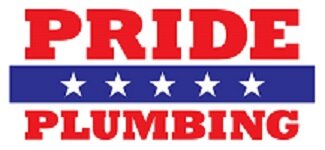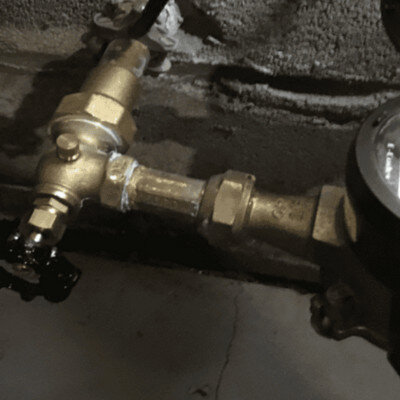What are Plumbing Valves?
And Why Are They Important?
Why are plumbing valves so important?
Plumbing emergencies can happen at any time. By having properly functioning plumbing valves, you can manually stop the flow of water. There are a variety of valves and every plumbing fixture should have its own shut off valve. Below, we will go over the various types of plumbing valves and what you need to know about them.
Types of Valves
Main Water Shut Off Valve:
This is known as the most important water valve of all. It supplies water to the entire house. From the main water shut off valve, water is distributed to other pipes throughout your home. Unfortunately, main water shut off valves can become clogged with mineral deposits and grit. They can be damaged to the point where they need to be replaced. Replacing main water shut off valves can be tricky. Call your neighborhood plumber, Pride Plumbing of Rochester, if you want us to check it out!
Gate Valve:
Gate valves are one of the most common valves used as a main shut off valve. They are reliable and long-lasting. Gate valves have a twist-type handle and should only be used to fully open water supply or completely shut off water supply. Using these valves to regulate the flow of water can wear them out. Although reliable, they are susceptible to getting stuck in the “on” or “off” position. Gate valves are mainly used in applications where the water needs to be shut off infrequently, such as spigots for your garden hose.
Ball Valve:
Ball valves may be the most reliable valve and are commonly used for main water shut offs. Similar to gate valves, ball valves should be all the way open to allow the full flow of water or all the way closed to restrict all water from flowing. The valve is controlled by moving it between 0 and 90 degrees. If the lever is aligned with the pipe, water will flow. If the lever is perpendicular to the pipe, water will not flow. At a quick glance it is easy to see if your ball valve is open or closed.
Check Valve:
Check valves are a common specialty valve that are found everywhere. If you have a sump pump in your basement, a check valve is most likely being utilized. They allow water to flow in one direction and automatically prevents back flow. Unlike the other valves, check valves do not have control handles.
Fixture Shut Off Valve:
Fixture shut off valves are also called stop valves and they control water flow to individual plumbing fixtures, such as faucets and toilets. An advantage of these valves is that you can work on a faucet or toilet without having to shut off the water to the entire house.
Pressure Reducing Valve:
Pressure reducing valves are installed in order to reduce and regulate the overall water pressure in a plumbing system. They slow down the pressure of water flowing into your home. Pressure reducing valves differ from the other valves because they are not used to open or close the water flow. They are commonly used in houses that have high water pressure. They are installed on the main water line next to the shut off valve. Pressure reducing valves are helpful in that they are set to regulate your water flow to a specific pressure. What this means is that if there is a sudden spike in your area's water pressure, you will still have the same, consistent amount of water pressure in your home.
Pressure Reducing Valve
FAQ's
I want high water pressure… Why should I invest in a pressure reducing valve?
There are many benefits of having a pressure reducing valve installed:
If the water pressure in your home is too high, the pressure puts stress on your appliances and can wear them out faster, and they are not cheap to replace.
Having a pressure reducing valve does not mean that you will have an unenjoyable shower with no water coming out. With a pressure reducing valve you can have a comfortable shower that is appropriate for your plumbing appliances.
Save water! By regulating your water pressure, it will save water and money.
City lines that are supplying water to your pipes may push out too much pressure to your home. Ideally you want your water pressure to be at 60psi and cities can get as high as 150psi, which can damage your plumbing system. By using a pressure reducing valve, it will reduce the water pressure from the city down to what you have it set at, leading to a nice, even, and safe water pressure.
What is a pressure relief valve?
Pressure relief valves differ from pressure reducing valves. We just learned that pressure reducing valves slow down the pressure of water flowing into your home.
A pressure relief valve is located near the top of your hot water heater. The purpose of these valves is to release water which lowers the water pressure inside your water heater, whether it is a tankless gas water heater, an electric tankless water heater or a standard gas water heater or a standard electric water heater. If you didn’t have a pressure relief valve, your water heater would run the risk of exploding if the temperature or pressure got higher than the tank was designed to handle, so they are very important!
What is a pressure balance valve? Are these the same as pressure reducing valves?
They are not the same as pressure reducing valves!
Pressure balance valves are generally for shower plumbing and are used for your shower and tub. They have a single control that regulates the hot and cold water that flows out of the fixture. With pressure balance valves, there is no true volume control, so when they are on, 100% of the water volume flows through. They have a maximum temperature limit that is set at the time of installation, which provides scald protection.
Example of how they work: Most likely, we have all experienced a time when someone was showering and another person went to the bathroom. Flushing the toilet then caused scalding hot water or freezing cold water for the person in the shower. Pressure balancing valves automatically reduces the amount of hot or cold water so the pressure and temperature within the shower both stay consistent.
I’ve also heard of thermostatic valves. What are they?
Alike pressure balance valves, thermostatic valves are a type of shower valve that someone may use for their shower or tub. Thermostatic valves have a maximum temperature limit, which provides scald protection. They have two control valves, one for the pressure and one for the temperature. You can have low water pressure or high water pressure. This way, when you are shampooing or shaving, you can lower the pressure to conserve water. You can also set the shower to always have the exact temperature you want. If you wish to change the pressure, it will not change the temperature of your shower and if you wish to change the temperature, it will not change the pressure!
Learn more about both pressure balance valves and thermostatic valves here!
Why should I know where my valves are located?
Single Valve Shut Offs: As we all know, the winters in Rochester can be harsh! Due to the cold weather, we are susceptible to frozen pipes. These pipes could then burst, leading to water damage. If you know extremely frigid weather is coming, you can shut off the water exclusively to your outdoor spigot.
Do you have a leaking faucet, leaking pipe, or leaking sink? Wherever that leak may be, single valve shut offs allow you to turn the water off for that specific area to make the plumbing work easier.
Main Water Shut Off: Do you have a leak but don’t know where it’s coming from? Is your basement under 2 inches of water? This is why every homeowner should know where the main water shut off is.
The location of the main water shut off valve can vary, however it is usually located in the basement or a utility area of the house. By turning the valve clockwise, it cuts off the water supply to the entire house.
How will I know if my valves are functioning properly before an emergency?
Pride Plumbing of Rochester has licensed professional plumbers who do plumbing home inspections. Within the plumbing home inspection, your plumbing technician will check the valves to make sure they are properly functioning. We have Pride Plumbing of Rochester specific valve tags, so in case of an emergency, there will be no question what valve is associated with what appliance. This way, if you do come home and find yourself standing in 2 inches of water, you can immediately shut off the valve and call your neighborhood plumber at (585) 271-7150 or schedule an appointment online. Access our coupons for savings!









